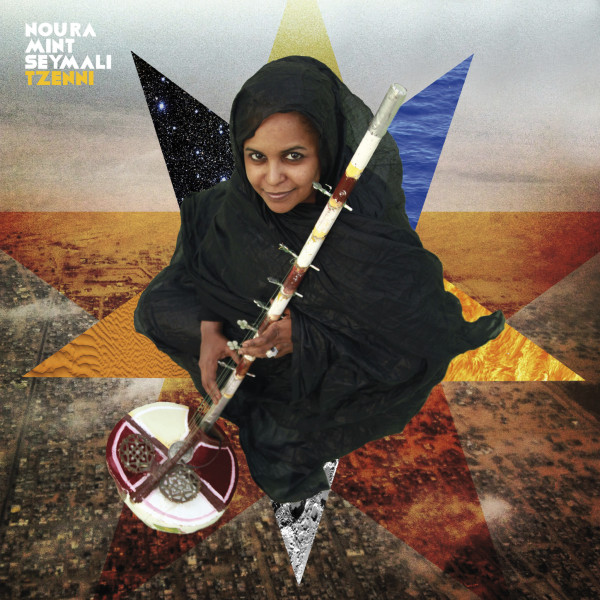aaamusic | On 16, Aug 2014

The sound of the desert, during the last few years, has been transformed. Like dunes moulded by a spell of Sirocco, the ever-changing political and cultural scenario has shaped and reshaped the North Africa music scene too. New artistic regions have been dusted off from their patina of anonymity and they have been finally noticed. Among them, Mauritania is one of the most recent music discoveries and azawan, the traditional music style, has become one of the freshest hypes, when it comes to world music.
Its reality, which moves on the borders between the desert blues, the griot tradition, and Western African more poppish approaches, has been finally considered and celebrated. The credit goes to its mix between Sub-Saharan, Arabic, Berber and Western influences and, first of all, to some of the youngest and finest African artists, who grew up in the bright shadow of Dimi Mint Abba; the tutelary deity of Mauritanian iggawin (the caste of musicians).
Dimi Mint Abba’s daughter, Noura Mint Seymali, is one of the best examples among the new artistic generation. What makes Noura predestined is not just her parenthood with Dimi Mint Abba, but also the influence of her father. Seymali Ould Mouhamed Val, also a legendary performer, has been indeed a crucial figure for Mauritanian national culture.
Considering these premises, Noura Mint Seymali’s artistic life has inevitably been determined since her birth, but the way it has developed is surprising and intriguing. The Mauritanian artist, with the help of her husband’s guitar eclecticism, has been able to learn the unequalled lessons given by her parents, but at the same time to develop it – evolving and refreshing the traditional sounds of her country.
Tzenni, her third album, is the proof of her forward-thinking drive; of her down-the-line personality. Noura has musically travelled all along her continent, collecting and treasuring the countless African styles. From her roots, firmly clung to the griot tradition, she has moved into a more appealing song form, which winks at pop and at more conventional sounds.
‘Tzenni’, the single chosen to represent the album, is a clear example of this mixture between the intrinsic Mauritanian background of the artist and her modernising will. The pentatonic scales which identify Noura Mint Seymali’s singing, freely move on the recurring distorted guitar riffs played by her husband conveying a concentric sensation which and reflecting the original meaning of Tzenni – the traditional dance representing the orbiting movement of the earth around the sun.
The following chapters of the album follow this theme. The azawad, the combination between the ardine (the bow harp) the tidinit (the North Africa lute) which are the primary colors of the Moorish traditional music, becomes the starting point on which the Mauritanian artist builds her songs. Then, the addition of a bass guitar and drums (like the t’beul) played by Ousmane Touré and Matthew Tinari, gives the full-bodied sound able to revive the time-honoured North African music style.
The folklore of the desert is recapped and led to the present day through psychedelic solos, mystical vocalisations and funk arrangements. Songs about the past, the present and the future of the Maghreb region follow one another to shine a light on an only recently unearthed intriguing artistic reality.
★★★★★
Marco Canepari